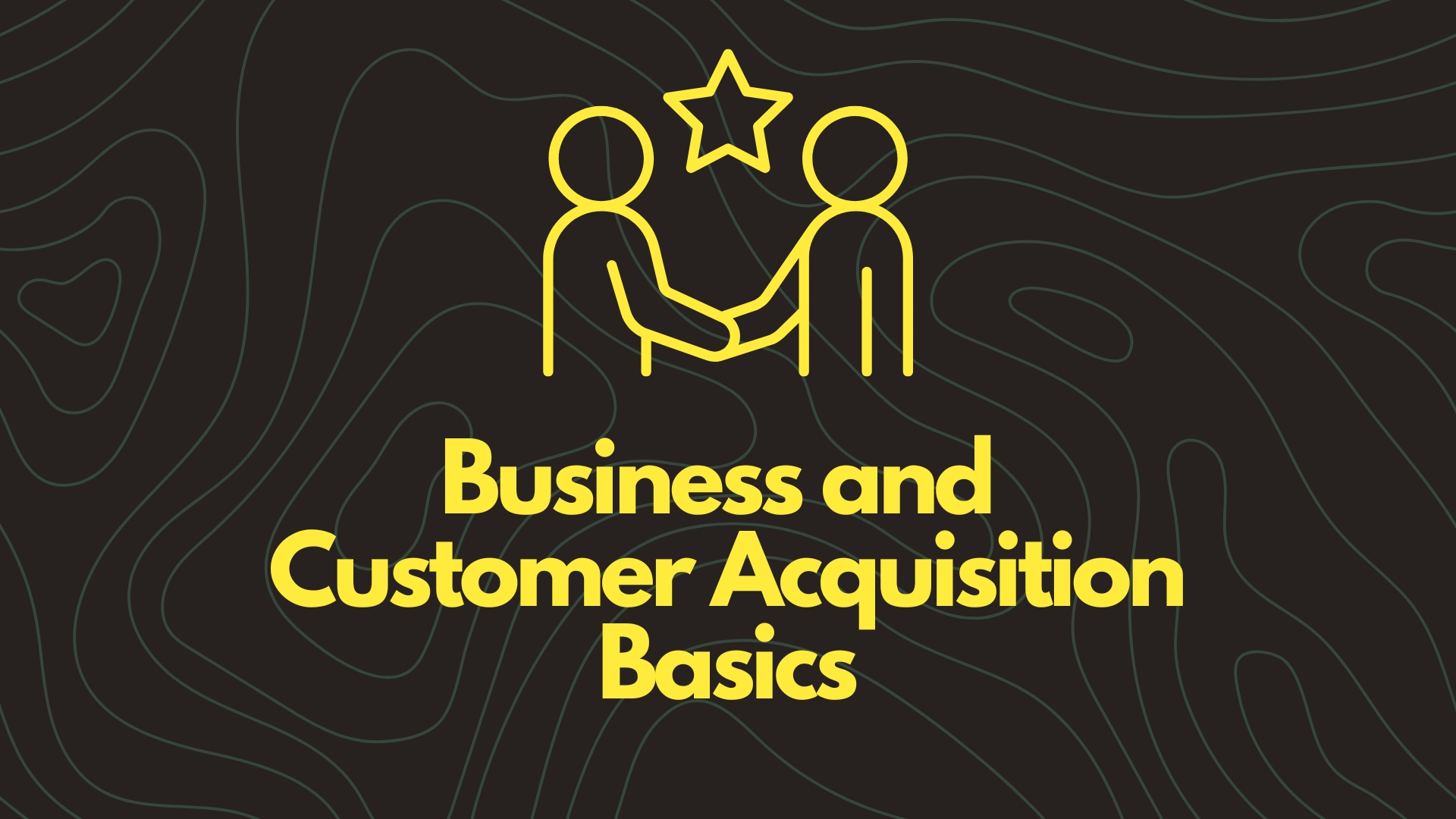Published
- 4 min read
Business and Customer Acquisition Basics

When building a software business, understanding key concepts and metrics related to customer acquisition and retention is essential. Here are some important terms and strategies:
Key Acronyms and Metrics
CAC (Customer Acquisition Cost)
- Definition: The cost associated with acquiring a new customer.
- Calculation: CAC = (Total Sales and Marketing Expenses) / (Number of New Customers Acquired)
- Considerations: Includes advertising, marketing campaigns, salaries of sales and marketing staff, and any other costs directly associated with acquiring new customers.
LTV (Lifetime Value)
- Definition: The total revenue a business can reasonably expect from a single customer account throughout the business relationship.
- Calculation: LTV = (Average Purchase Value) × (Average Purchase Frequency Rate) × (Customer Lifespan)
- Importance: Helps in determining the long-term value of a customer and in making strategic decisions about how much to invest in customer acquisition.
ROI (Return on Investment)
- Definition: A measure of the profitability of an investment.
- Calculation: ROI = (Net Profit / Cost of Investment) × 100
- Usage: Helps evaluate the efficiency of an investment in marketing and customer acquisition.
CLV (Customer Lifetime Value)
- Definition: Synonymous with LTV, it represents the total revenue a company can expect from a customer.
- Importance: Critical for understanding the long-term profitability of your customer relationships.
Churn Rate
- Definition: The percentage of customers who stop using your product or service during a given period.
- Calculation: Churn Rate = (Number of Customers Lost during a Period / Number of Customers at the Start of the Period) × 100
- Impact: High churn rates indicate potential issues with customer satisfaction or product value.
ARPU (Average Revenue Per User)
- Definition: The average revenue generated per user.
- Calculation: ARPU = Total Revenue / Number of Users
- Usage: Helps in understanding the revenue contribution of each customer.
Customer Acquisition Strategies
Content Marketing
- Description: Creating and distributing valuable content to attract and engage a target audience.
- Examples: Blogs, videos, infographics, e-books.
- Benefits: Establishes authority, improves SEO, and nurtures leads through the sales funnel.
SEO (Search Engine Optimization)
- Description: Optimizing your website to rank higher in search engine results, making it easier for potential customers to find you.
- Benefits: Increases organic traffic and reduces the need for paid advertising.
PPC (Pay-Per-Click) Advertising
- Description: Paying for ads that appear in search engine results or on social media platforms.
- Examples: Google Ads, Facebook Ads.
- Benefits: Immediate visibility and targeted traffic.
Social Media Marketing
- Description: Using social media platforms to promote your products or services.
- Examples: Facebook, Twitter, LinkedIn, Instagram.
- Benefits: Builds brand awareness, engages with customers, and drives website traffic.
Email Marketing
- Description: Sending targeted emails to potential and current customers.
- Examples: Newsletters, promotional offers, personalized messages.
- Benefits: Direct communication, high ROI, and good for nurturing leads.
Referral Programs
- Description: Encouraging existing customers to refer new customers.
- Examples: Incentives like discounts or freebies.
- Benefits: Leverages word-of-mouth marketing and reduces acquisition costs.
Partnerships and Collaborations
- Description: Partnering with other businesses or influencers to reach a wider audience.
- Examples: Co-hosted webinars, joint marketing campaigns.
- Benefits: Expands reach and builds credibility through association.
Sustaining and Retaining Customers
Customer Support and Success
- Description: Providing excellent support to help customers get the most out of your product.
- Strategies: 24/7 support, comprehensive help center, proactive outreach.
- Benefits: Reduces churn and increases customer satisfaction.
Product Quality and Updates
- Description: Continuously improving your product based on customer feedback and market trends.
- Benefits: Keeps customers engaged and reduces the likelihood of them switching to a competitor.
Personalization
- Description: Tailoring the user experience and communications based on customer data.
- Examples: Personalized emails, customized user interfaces.
- Benefits: Enhances user experience and builds stronger customer relationships.
Loyalty Programs
- Description: Rewarding customers for their repeat business.
- Examples: Points systems, exclusive discounts.
- Benefits: Encourages repeat purchases and increases customer lifetime value.
Community Building
- Description: Creating a community around your product where customers can interact and share experiences.
- Examples: Online forums, social media groups.
- Benefits: Increases customer engagement and loyalty.
Preferred Way of Acquiring and Sustaining Customers
The preferred way of acquiring and sustaining customers in the software industry involves a combination of strategies tailored to your specific audience and product. Generally, a balanced approach including content marketing, SEO, and PPC for acquisition, paired with excellent customer support, regular product updates, and personalization for retention, works well.
For software businesses, focusing on the following is often most effective:
- Freemium Models: Offering a free version of the software with the option to upgrade to a premium version.
- SaaS (Software as a Service): Providing the software on a subscription basis, which helps in maintaining a steady revenue stream and ongoing customer relationships.
- Feedback Loops: Regularly soliciting and acting on customer feedback to improve the product and user experience.
By combining these approaches and continuously analyzing and optimizing your strategies based on key metrics like CAC, LTV, and churn rate, you can effectively acquire and retain customers for your software applications and services.